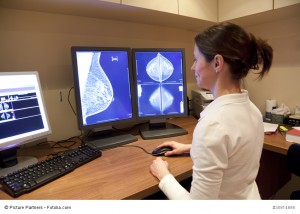According to the U.S. Department of Health and Human Services, getting regular mammograms has helped reduce breast cancer mortality in the United States by ⅓ since 1990. Still haven’t gotten your first mammogram?
Here are a few facts about mammograms every woman should know:
- Both breast exams and mammograms are vital to early detection – 85 percent of lesions can be detected with a mammogram. However, in order to make sure you are 100 percent protected, women should get both a breast exam and a mammogram.
- Mammograms are important even if you don’t have a family history of breast cancer – A majority of women who develop breast cancer do not have a family history of it. Start getting mammograms every two years after the age of 40 regardless of family history.
- There are two types of mammograms available – Screening mammograms are done for women who have not detected a lump or any symptoms of breast cancer. It involves doing two x-rays of each breast. Diagnostic mammograms are done when a lump has been found with a regular breast exam.
- Women with breast implants can get mammograms – Worried your breast implant might be an issue when going to get a mammogram? As long as you notify the radiologist prior to the mammogram, there shouldn’t be an issue. While breast implants hide some tissue, the radiologist or technician will be able to x-ray the breasts at different angles to see as much as possible.
- Both false positives and false negatives are possible with a mammogram – False negatives are most common in younger women due to dense breast tissue. but it’s not likely. False positives can happen in women who have had breast biopsies in the past and women who are taking estrogen.


